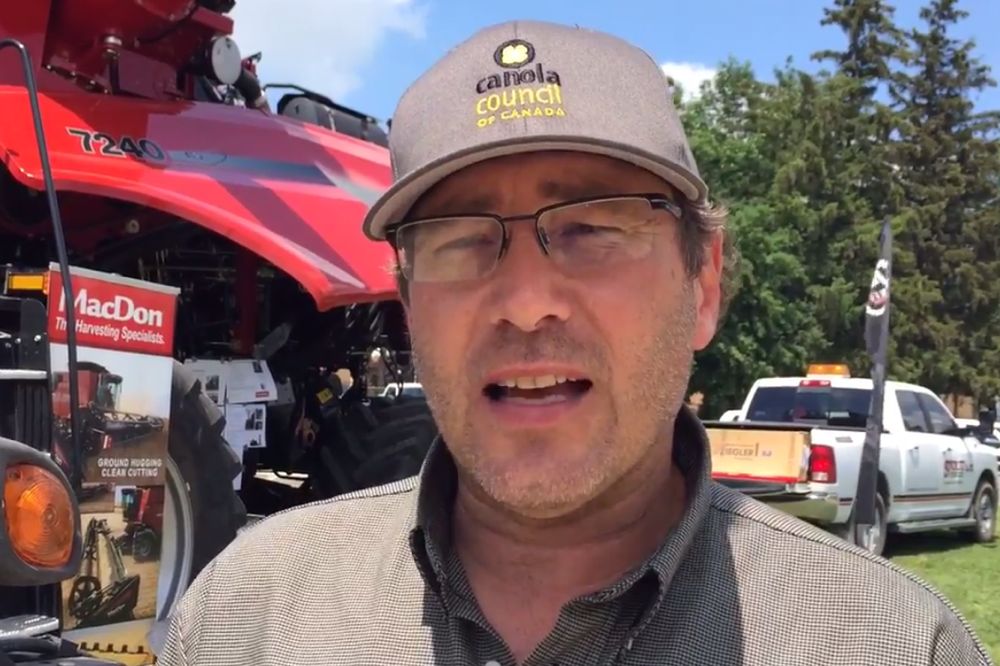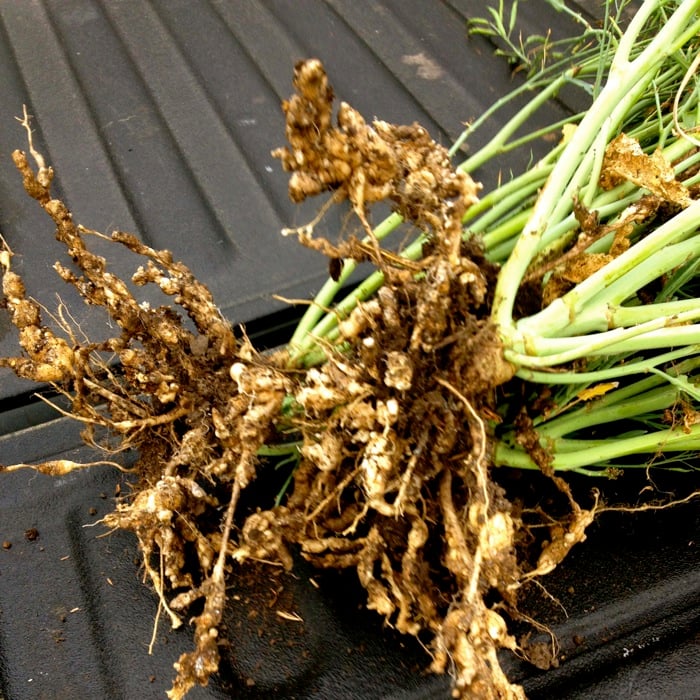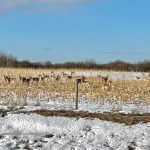Canola is very sensitive to seed-placed fertilizer. We don’t know what percentage of canola seeds are lost to fertilizer burn or toxicity, given that many factors influence seed mortality, but generally, the more fertilizer placed with the seed, the more seeds and seedlings that will die.
“Non-viable seeds and seedlings are a lost opportunity of input investment, and could seriously curb the yield and profit potential of canola,” says Shawn Senko, Canola Council of Canada agronomy specialist. “Putting only phosphate at safe amounts with the seed, and putting all other fertilizer away from the seed row is one proven way to increase seed survival.”
Read Also

Producers aren’t panicking over tariffs and trade threats
The influence of tariff and trade uncertainity on farm business decisions.
Two recent canola research studies reinforce this recommendation. Cynthia Grant, research scientist with Agriculture and Agri-Food Canada, led a study into the effects of two common seed-placed fertilizers: ammonium sulphate (AS) and mono-ammonium phosphate (MAP). The study concluded that canola stand density is significantly reduced when phosphate and sulphur fertilizers are used in combination in the seed row, with more damage attributed to AS. (Note: AS benefits canola yield, but is more safely placed outside the seed row.)
Figure 1 (shown below) shows that even with no MAP, a rate of 18 kg/ha (roughly 20 lb./ac.) of AS reduces canola stand density by about 25 per cent (115 plants per square metre down to less than 90). MAP alone (the gold line) results in a more rapid loss in plant density with rates higher than 20 kg/ha of phosphate.

Liquid forms did not change the result. A summary of the study stated that about half the site years showed seedling toxicity with excess rates of MAP plus AS or with liquid forms ammonium polyphosphate and ammonium thiosulphate in combination. “In all the work I have done, the liquid (whether P source or N source) was as damaging as the granular,” Grant says.
- From the Grainews website: Phosphorous recommendations
The second recent study, also led by Cynthia Grant with AAFC, compared various rates of seed-placed phosphate. “Seedling damage occurred with high rates of applied phosphorus (P) unless soil conditions were very wet, with damage being particularly evident with liquid P. Damage occurred with P rates of 40 and 80 kg/ha of phosphate,” the study concluded. Note that 44 kg/ha of phosphate is roughly 40 lbs./ac., which is why the lower rate of 20 lbs./ac. seed-placed phosphate is generally recommended. If the 20 lbs./ac. rate is not enough to meet your fertilizer prescription, the rest can go with the other nutrients outside the seed row.
This second study also compared various phosphate fertilizer products, including controlled release and other specialty formulations. Results showed little difference among phosphate sources in their effects on canola seed yield, but where seedling damage occurred, polymer-coated MAP reduced the risk.
How about no P with seed?
The Canola Council of Canada’s Canola Watch newsletter had a Twitter question asking whether taking all fertilizer out of the seed row would be an even better approach. This can work in high-P soils and warm soil conditions, but in general, some P in the seed row is advised. “On highly P-deficient soils, efficiency tends to be better when P is placed in or very near the seed row,” says AAFC researcher Cynthia Grant. “This becomes more important with cold soils and with the degree of P deficiency.”
The other consideration in this case is root avoidance, which can decrease the benefits of placing all P outside the seed-row in the same band as the full rate of nitrogen. “Roots will not enter the band to access the P until the band mellows. This may lead to a delay in plant access to the P,” Grant says. “This will not necessarily be a big deal on high-P soils, especially with late seeding, but may be an issue on low-P soils, especially if the crop is seeded early.”
Don Flaten, soil scientist with the University of Manitoba, researched this issue in the 1980s. The research showed that “placing P in the same band as 70 lb./ac. of N led to a delay of several weeks in fertilizer P uptake,” he says.
Feed the crop but protect the seed
“You can’t put all fertilizer in the seed row, so adjusting blends and systems to put fertilizer in a separate band is just part of canola production,” Senko says.
Canola needs three to 3.5 (lbs./ac.) of available nitrogen, 1.25 to 1.5 lbs./ac. of phosphate, 2.3 to 2.5 lbs./ac. of potassium, and 0.55 to 0.8 lbs./ac. of sulphur per bushel of yield. A 50-bu./ac. canola crop, for example, must have 150 to 175 lbs./ac. of available nitrogen, 62.5 pounds of phosphate, 125 pounds of potassium and 30 to 40 pounds of sulphur.
Some of this will be available through soil reserves and mineralization. “The rest will come from fertilizer, and we stress that all of this fertilizer — except for the 20 lbs./ac. or so of seed-placed phosphate — should be placed outside the seed row,” Senko says.
The 20 lbs./ac. seed-placed rate of phosphate is low enough for seed safety but high enough to ensure good proximity between seed and fertilizer prills or droplets in the seed row.
Jay Whetter is communications manager with the Canola Council of Canada, and editor of the free Canola Watch agronomy newsletter. Sign up at www.canolawatch.org and follow @CanolaWatch on Twitter. To read summaries of the two recent Cindy Grant studies, see the Canola Digest Science Edition 2013 and look for studies 2.1 and 2.4.















